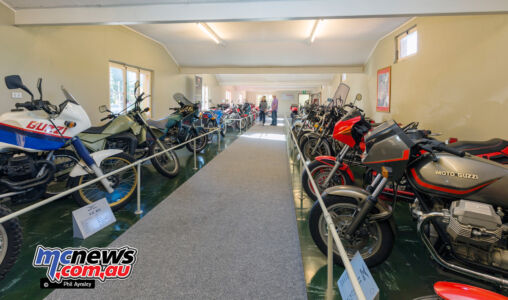Moto Guzzi Museum at Mandello del Lario
With Phil Aynsley
The Moto Guzzi Museum, located in an old two storied building that is part of the original factory in Mandello del Lario, is an “old school” affair – and none the worse for that!
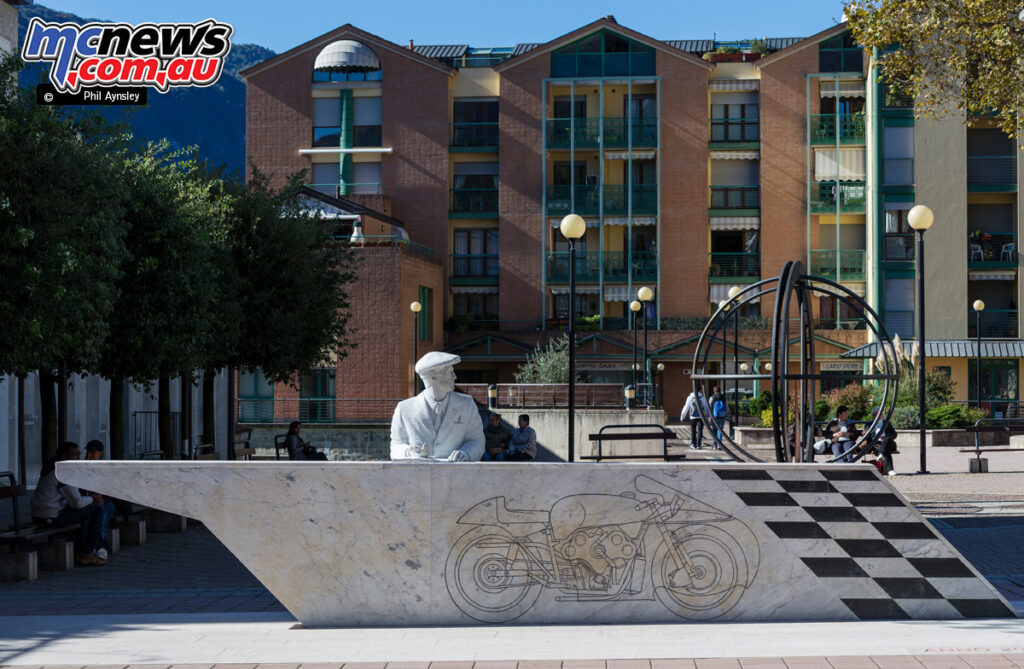
Although not a part of the museum I thought it fitting to start this column with some views of the Carlo Guzzi memorial in the main square of the town.
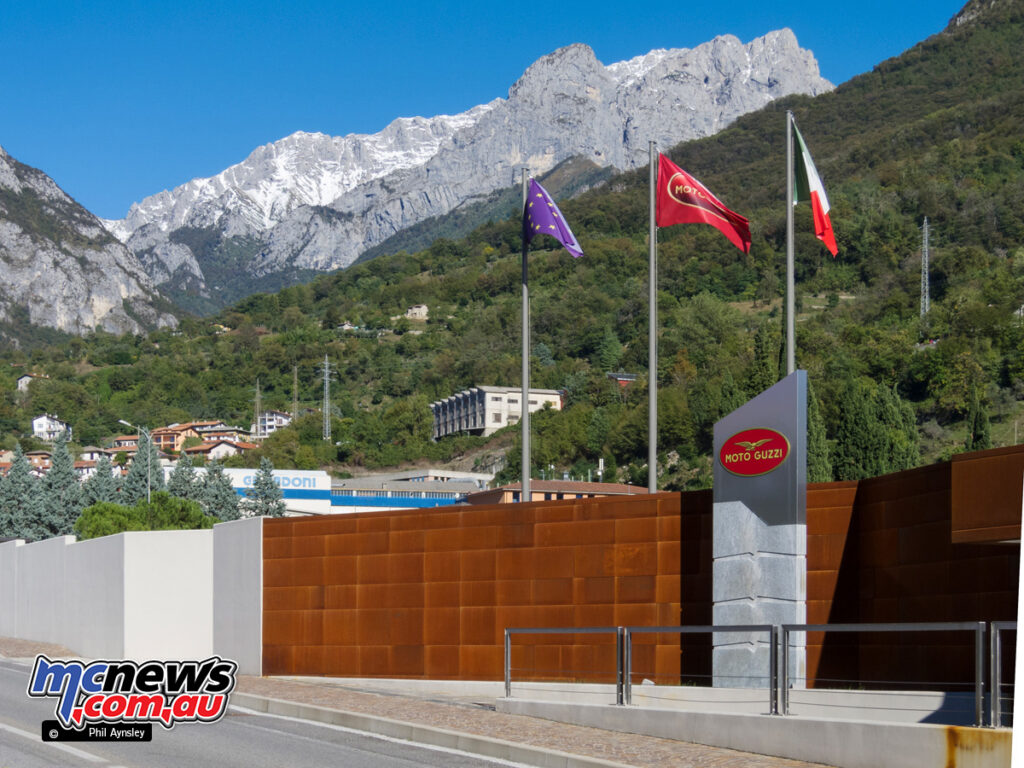
The new main entrance to the factory.
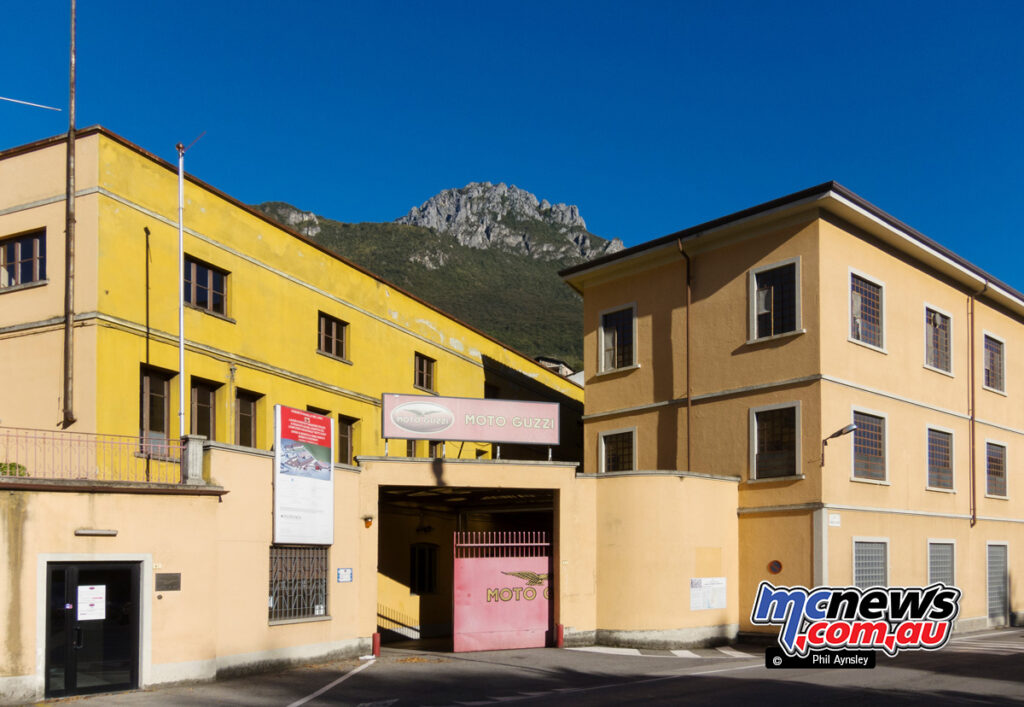
The far better known old entrance gates behind which is the museum building (with the yellow wall).
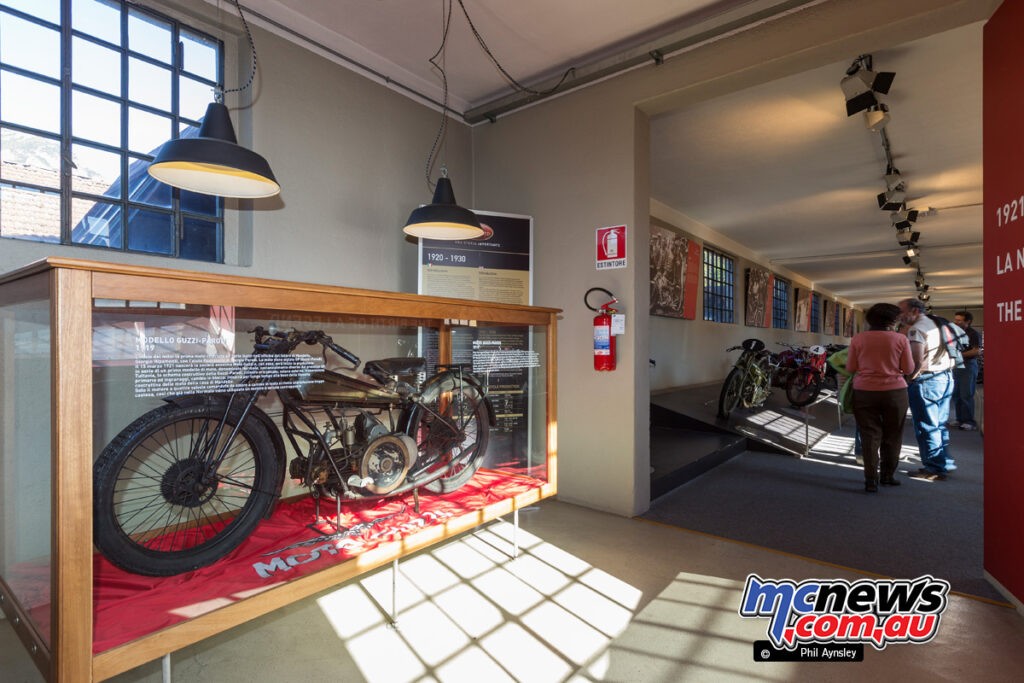
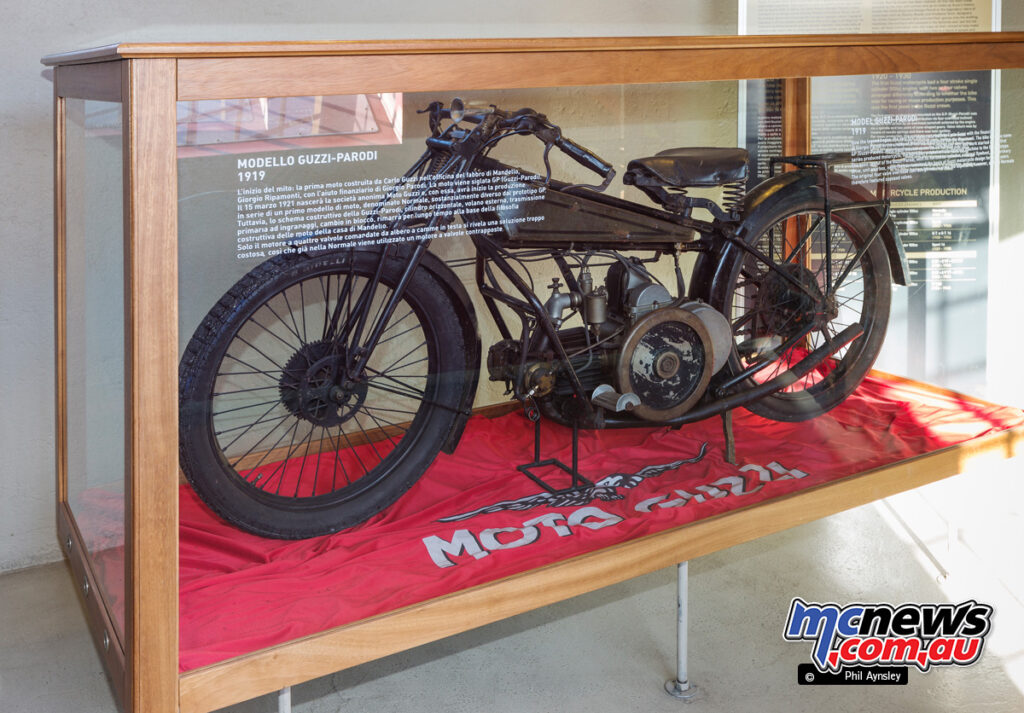
The very first Moto Guzzi resides in a glass case. The Guzzi-Parodi (or G.P.) was named after Carlo Guzzi and Giorgio Parodi and was completed in 1920. The horizontal 500 cc single featured a SOHC, twin spark plugs and an impressive (for the time) lubrication system. Despite a low compression ratio of 3.5:1 it produced 12 hp and was capable of 100 km/h.
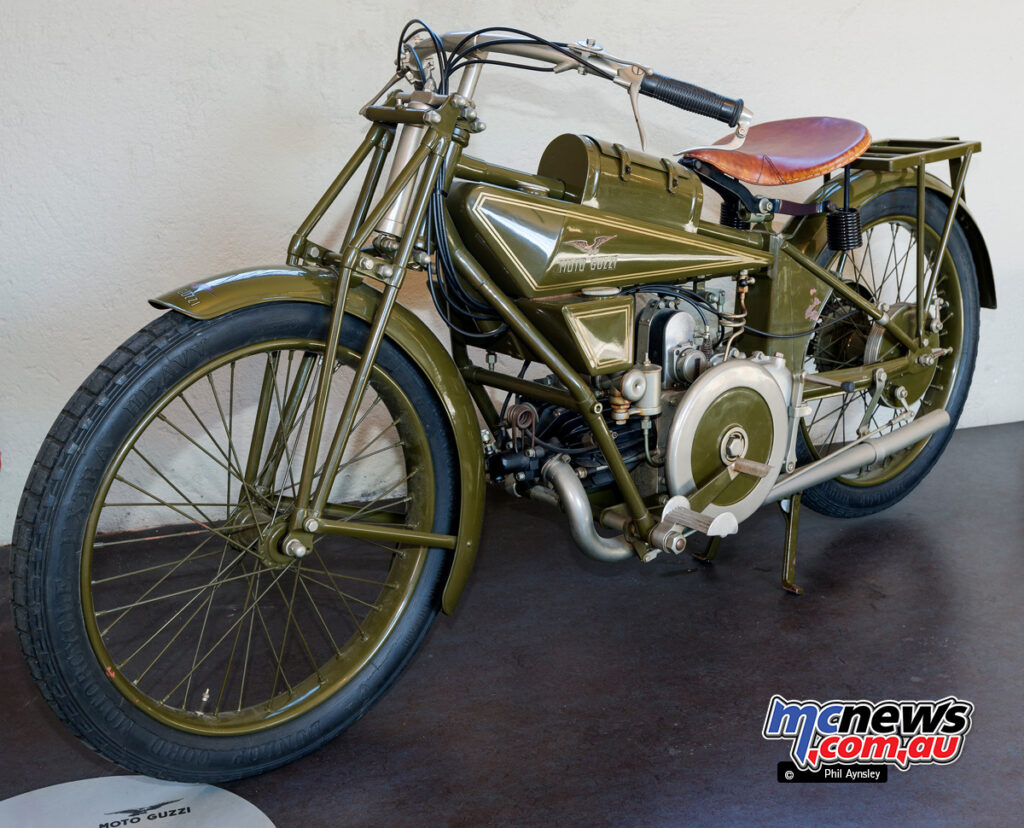
The first production model was the Normale which was built from 1921-1924. While similar to the “G.P.” it had a simplified two-valve head with side inlet and overhead exhaust. Power was 8 hp at 3200 rpm. The Normale weighed in at 130 kg and had a top speed of 85 km/h, well down on the G.P.
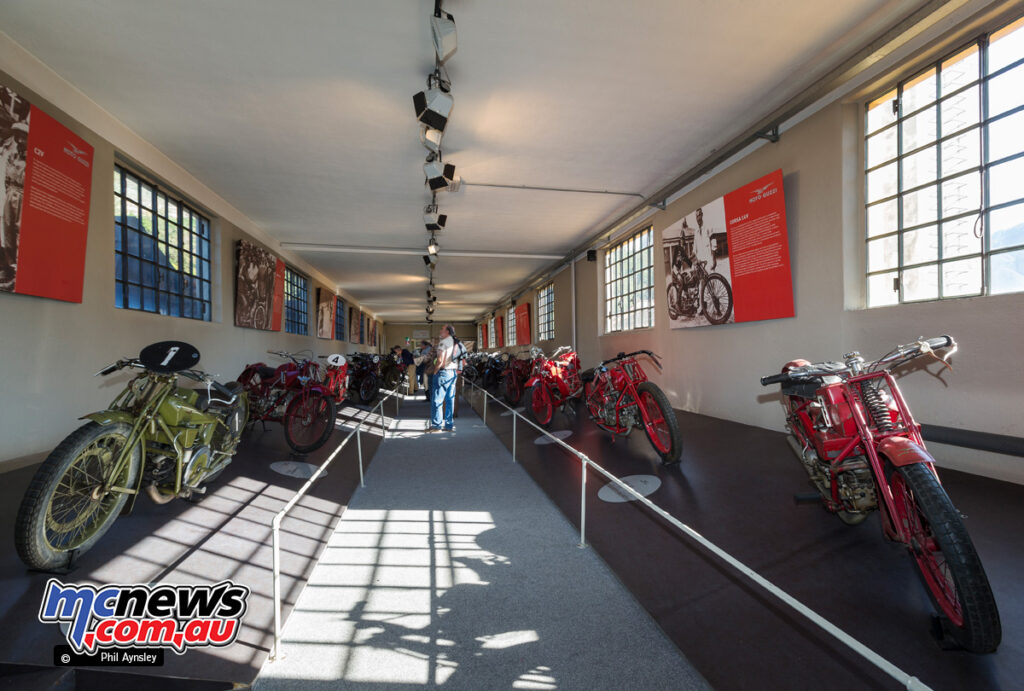
The museum consists of a number of long rooms with bikes lining both sides.
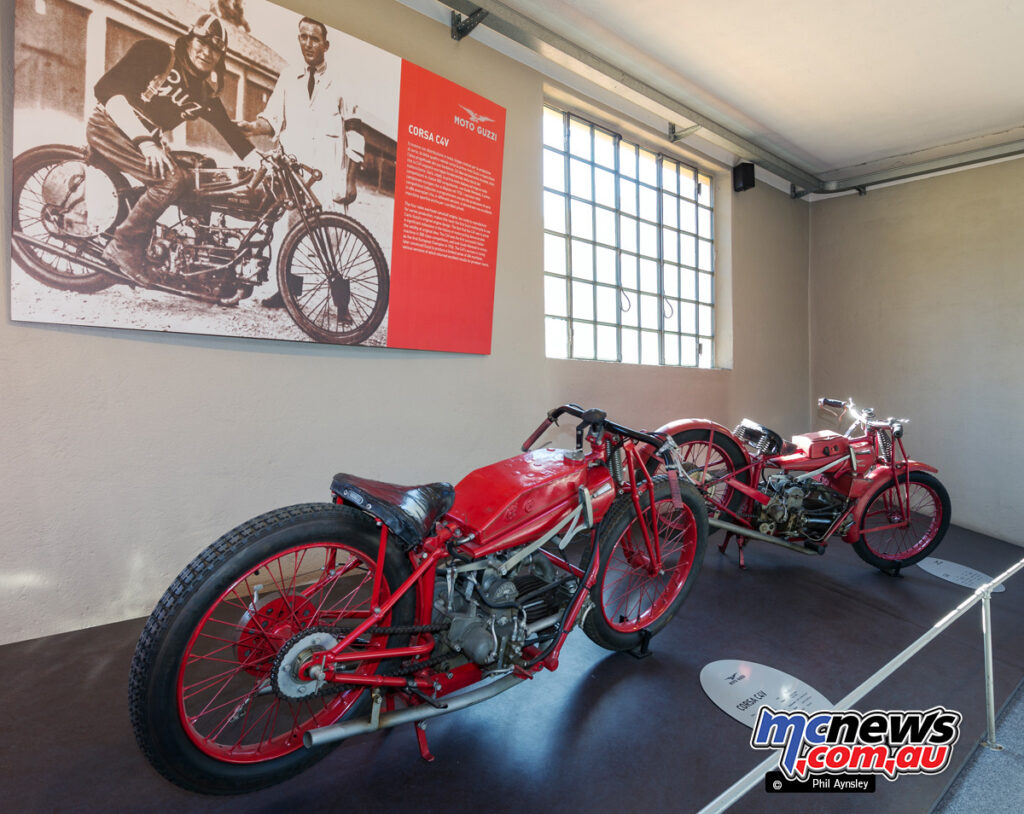
The bike on which Guido Mentasti won the Championship of Europe in 1924. The C4V saw the return to a 4-valve head and proved to be very successful. Power output was 22 hp at 5500 rpm, with a weight of 130 kg and top speed maxed out at 140 km/h.
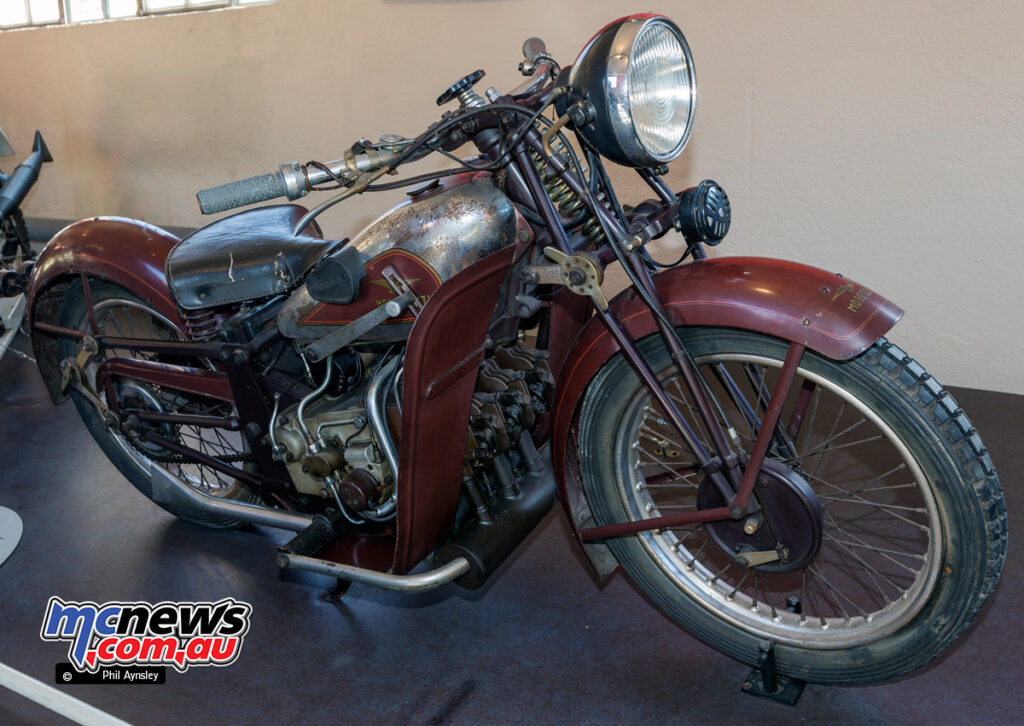
The only surviving example of the 500cc Tre Cilindri of 1932. Derived from the 1931 500cc four-cylinder race bike, the Tre Cilindri was a highly advanced touring bike for the time, offering 25 hp and a top speed of 130 km/h, but the high price, 169 kg weight and average performance saw it discontinued after only one year.
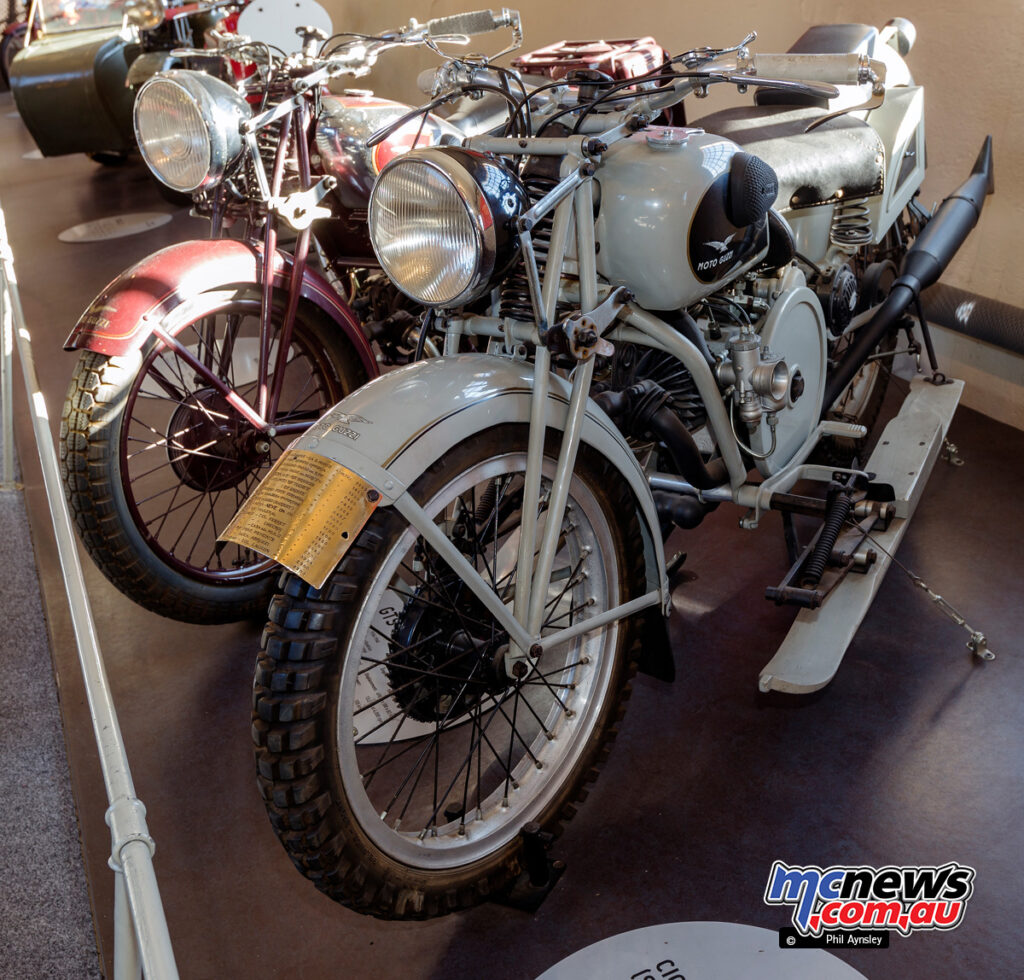
Based on the earlier military GT 20, the Alce (Moose) was the main motorcycle of the Italian Army during WW II and was also produced as a three-wheeled truck – the Trialce. One variant was the Cicogna (Stork) seen here. Possibly intended for export to Finland it is fitted with skis. This example carries a copper front guard extension (in place of the normal rubber one) that lists the details of the mountains it has climbed.
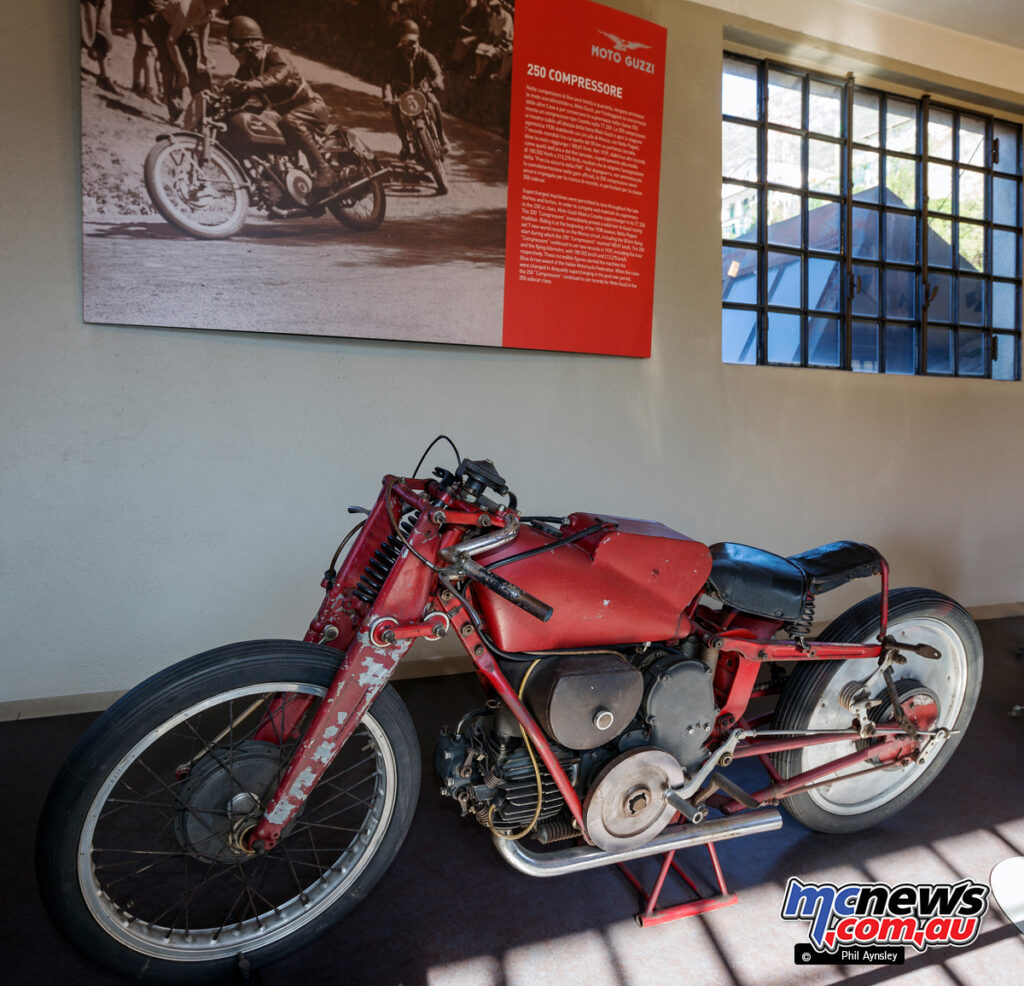
The 250 Compressor used a Guzzi built Cozette supercharger and was mainly used for record breaking over a period of many years – 1938 until 1952.
In response to the supercharged Gilera, BMW and NSU race bikes, Guzzi developed this 500cc supercharged triple during 1939. It only raced the once, at Genoa in May 1940 where it retired. The two-valve motor was inclined at 45º and used a 120º crankshaft, while power was 65 hp at 8000 rpm. The bike weighed in at 175 kg and was capable of a top speed of 230 km/h.
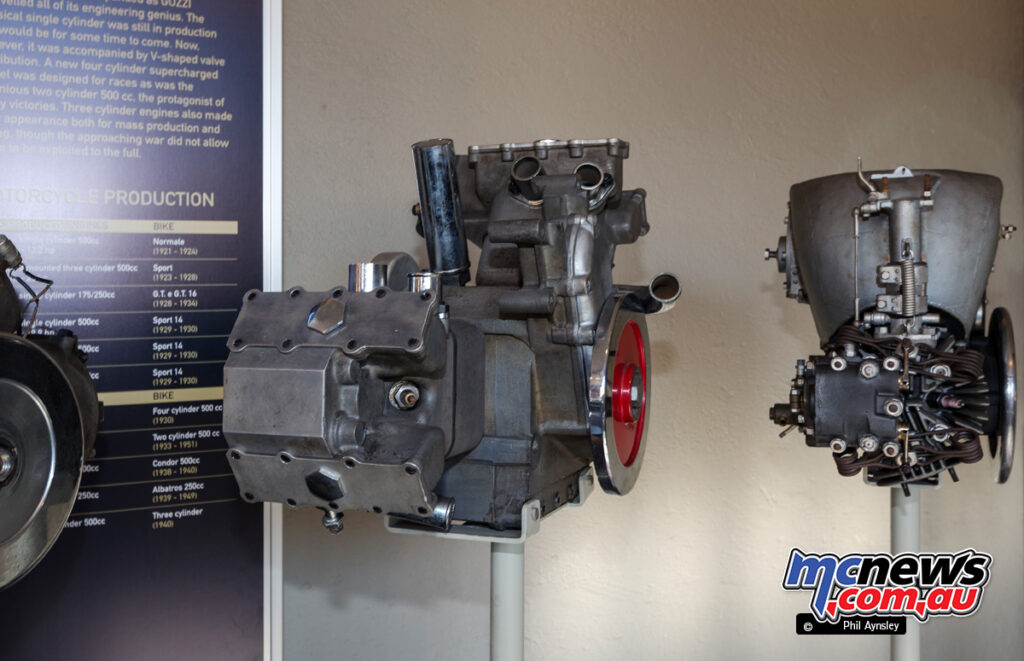
On the left a water-cooled version of the 120º 500 cc V-twin and on the right a supercharged and fuel-injected 500 cc single.
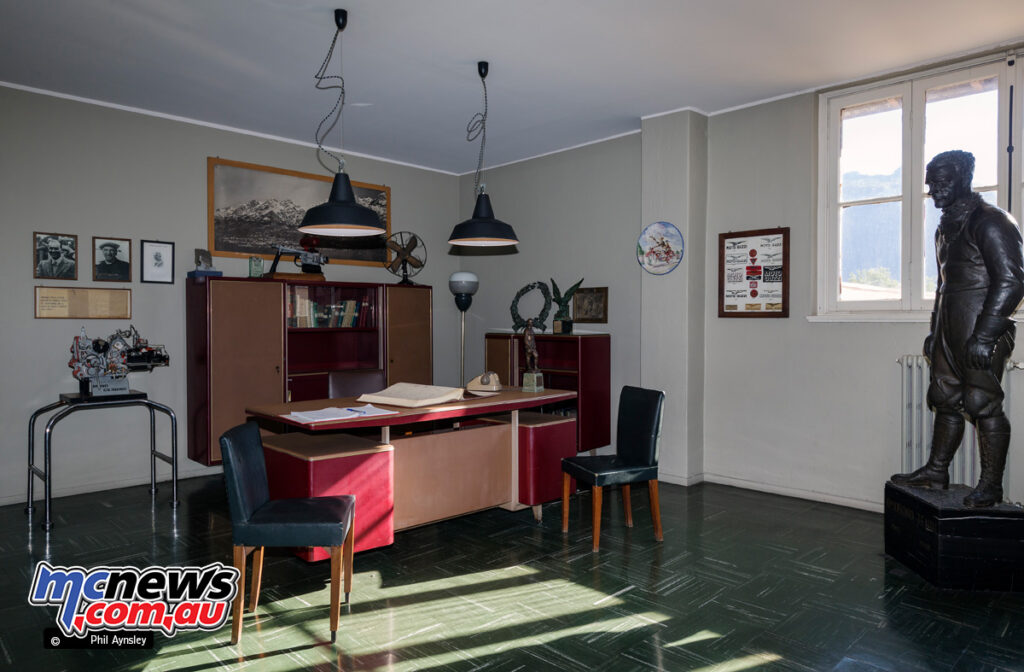
It is a little known fact that Carlo did not have any financial interest in the company that bore his name. Instead he was paid a royalty on each bike produced.
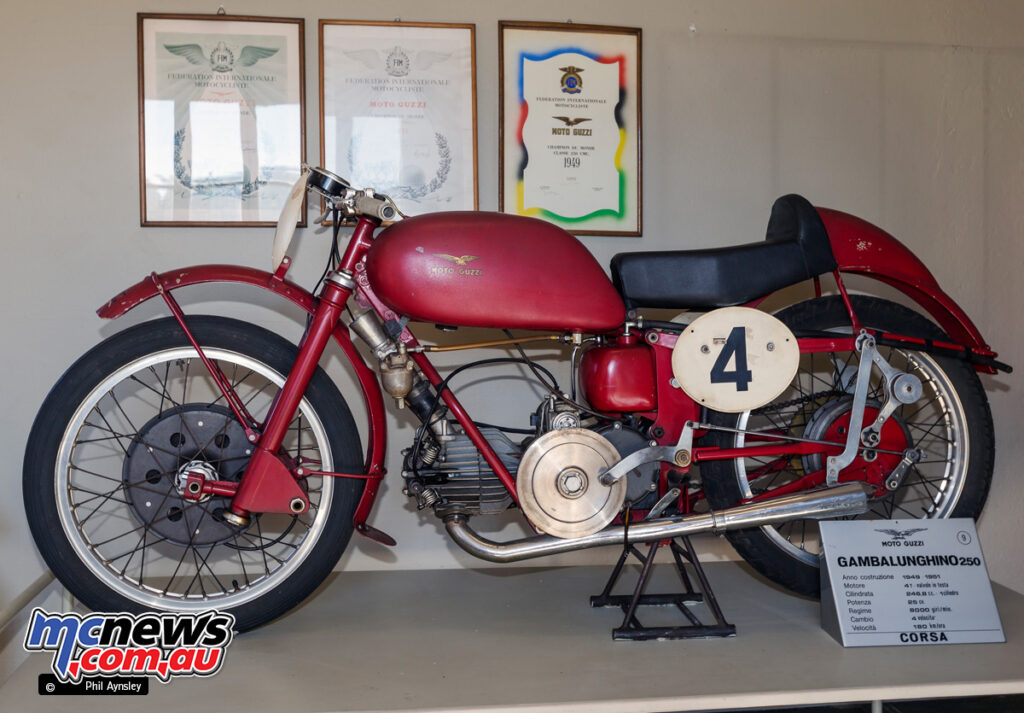
The 1949 250 cc Gamalunghino (Little long-leg) was basically the pre-war Albatros fitted with the leading link front suspension and brake from the 500 cc Gambalunga. It proved to be a very successful combination, winning the first GP it was entered in – the IoM TT.
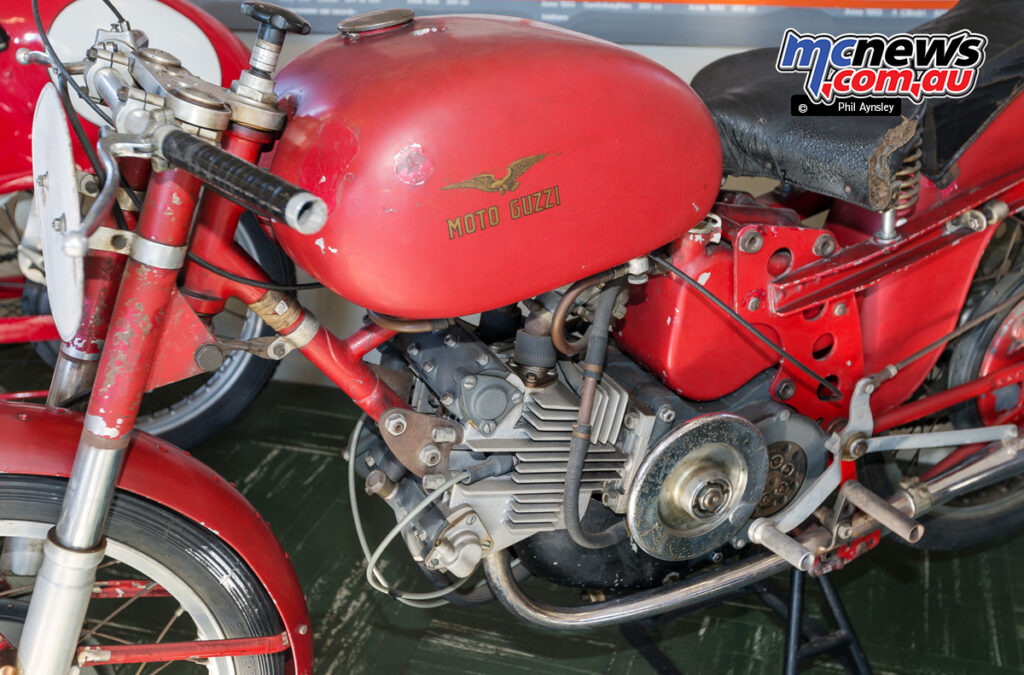
Originally designed to use supercharging, the 250 cc Bicilindrica’s development coincided with the banning of forced induction in 1946, so when it appeared the following year with a normally aspirated motor it was already a compromised bike.
This 1948 machine is the second (and final) bike built. Despite showing some promise, leading the 1948 Lightweight TT at the IoM, development was abandoned after Omobono Tenni was killed while testing one later in the year.
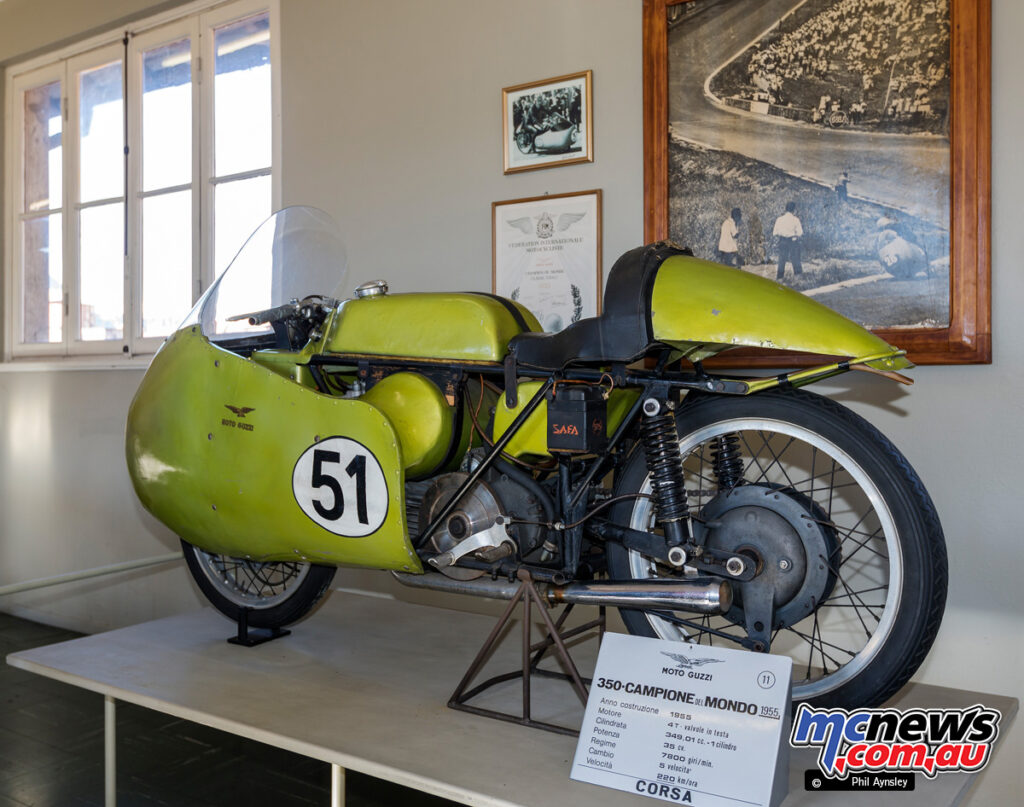
Guzzi 350s won every round that season with Bill Lomas taking the title with four victories. Duillio Agostini, Dickie Dale and Ken Kavanagh won the others.
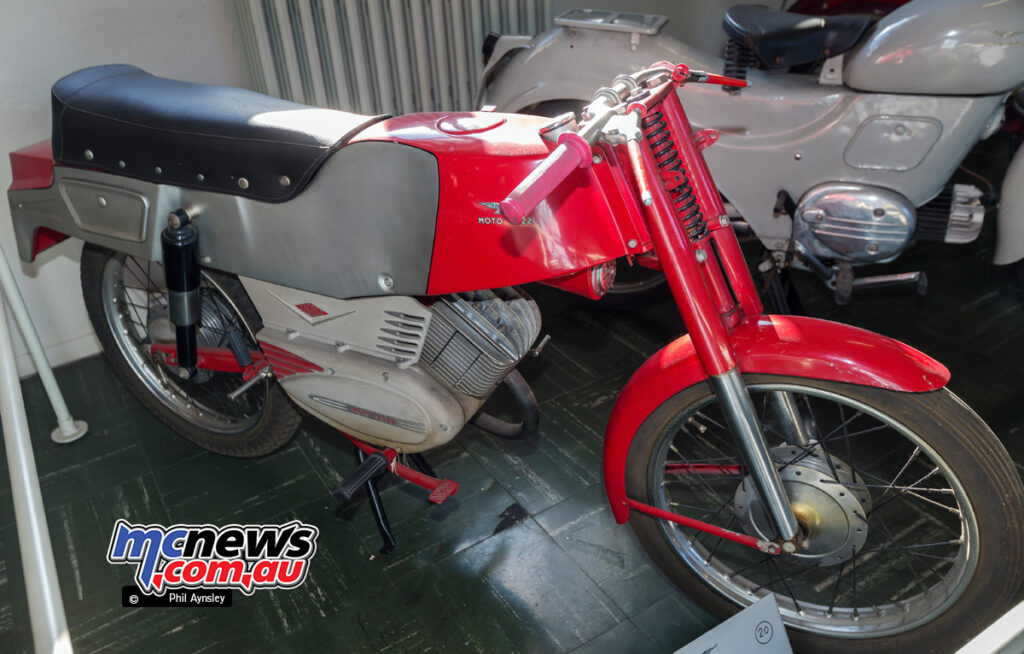
A prototype for a modernised version of the Zigolo, which was produced from 1953 until 1965.
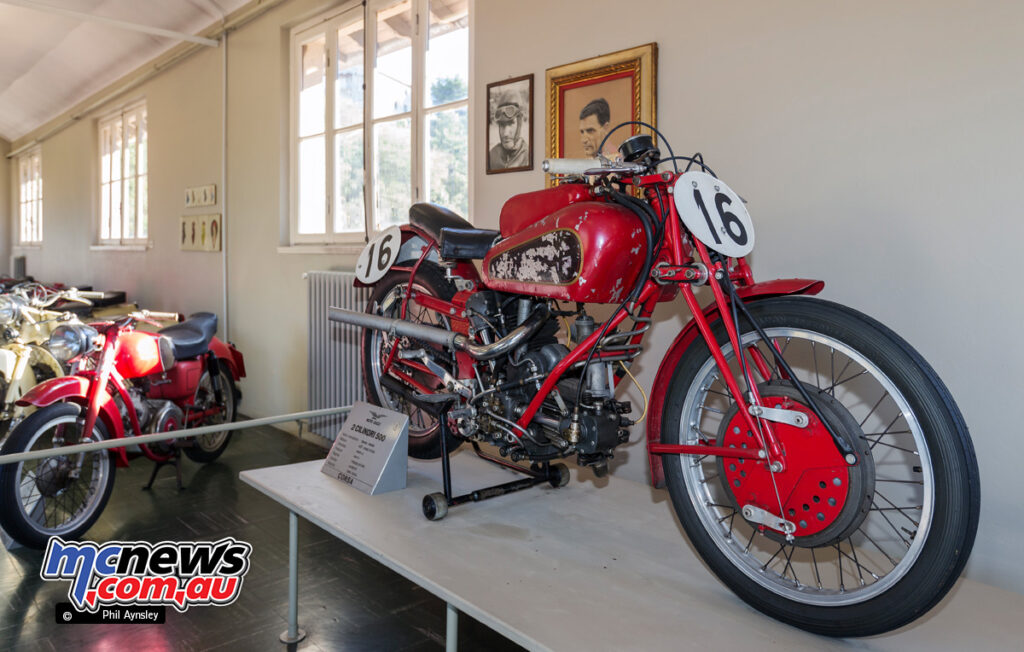
The distinctive 120º 500 cc Biclindrica first appeared in 1933 and was campaigned until 1951. This 1947 version is basically the same as the pre war model, apart from the heads and barrels being cast from Elektron, not iron.
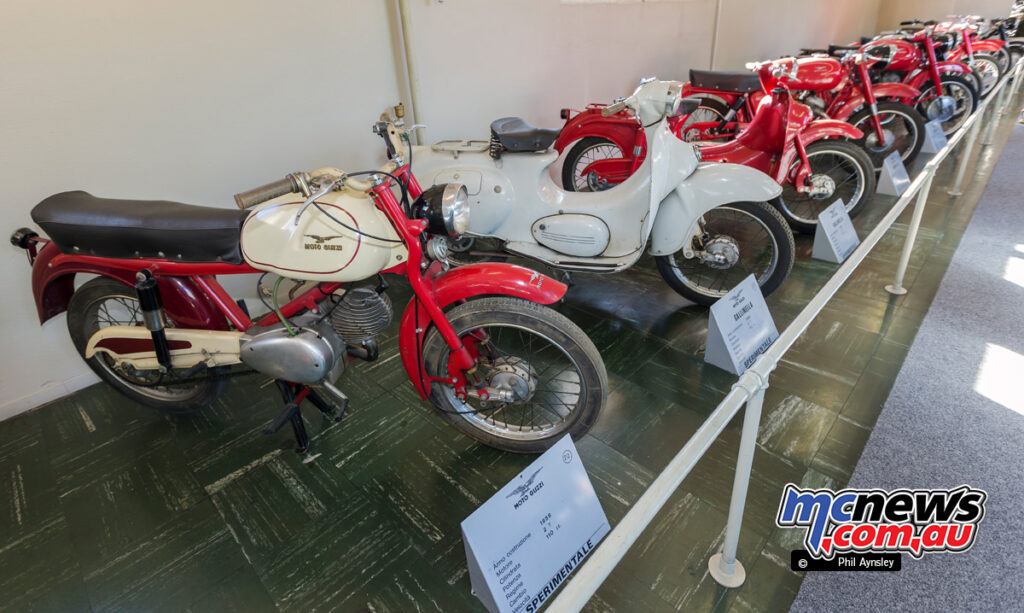
A line up of 1958 prototype 110 cc two-stroke bikes.
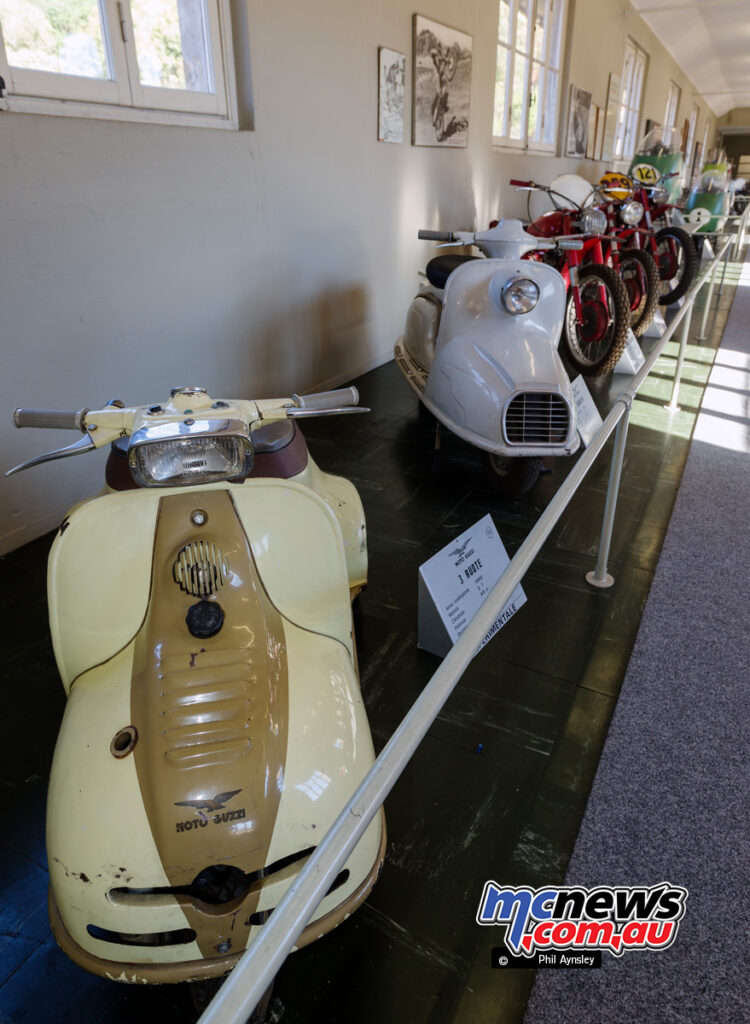
On the left the three-wheeled Tre Ruote of 1960. On the right a 160 cc two-stroke powered machine.
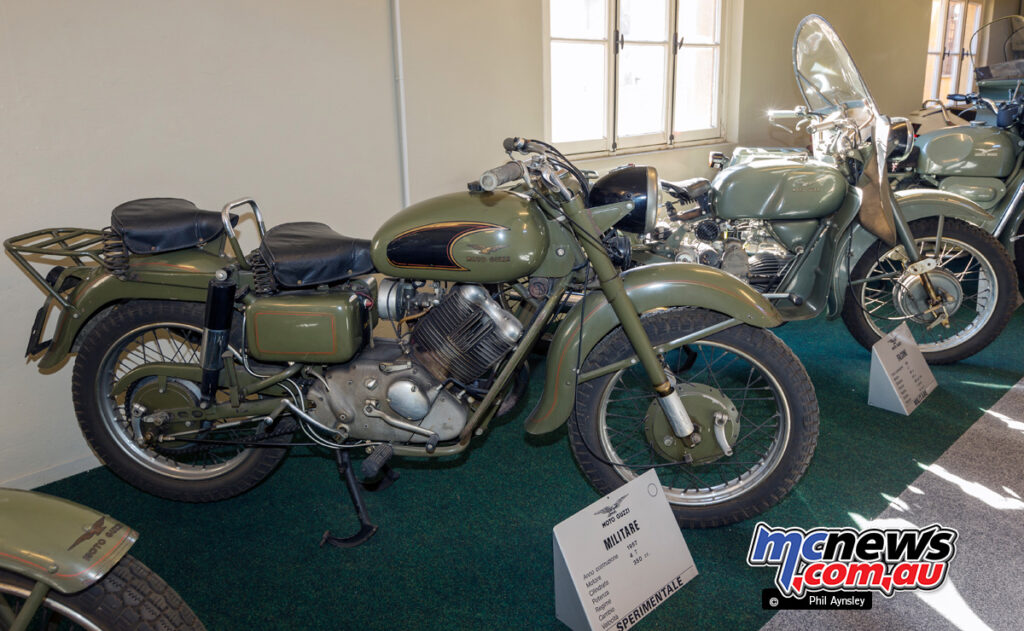
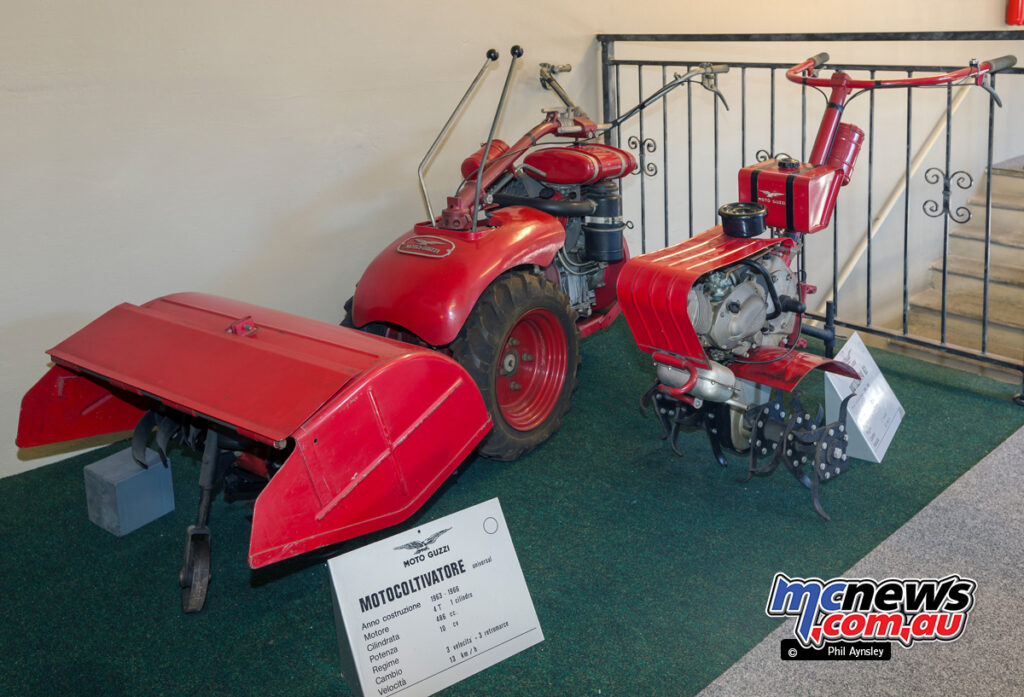
Produced from 1963-66 the 486 cc four-stroke motors made 10 hp, had three forward and three reverse gears and a top speed of 13 km/h.
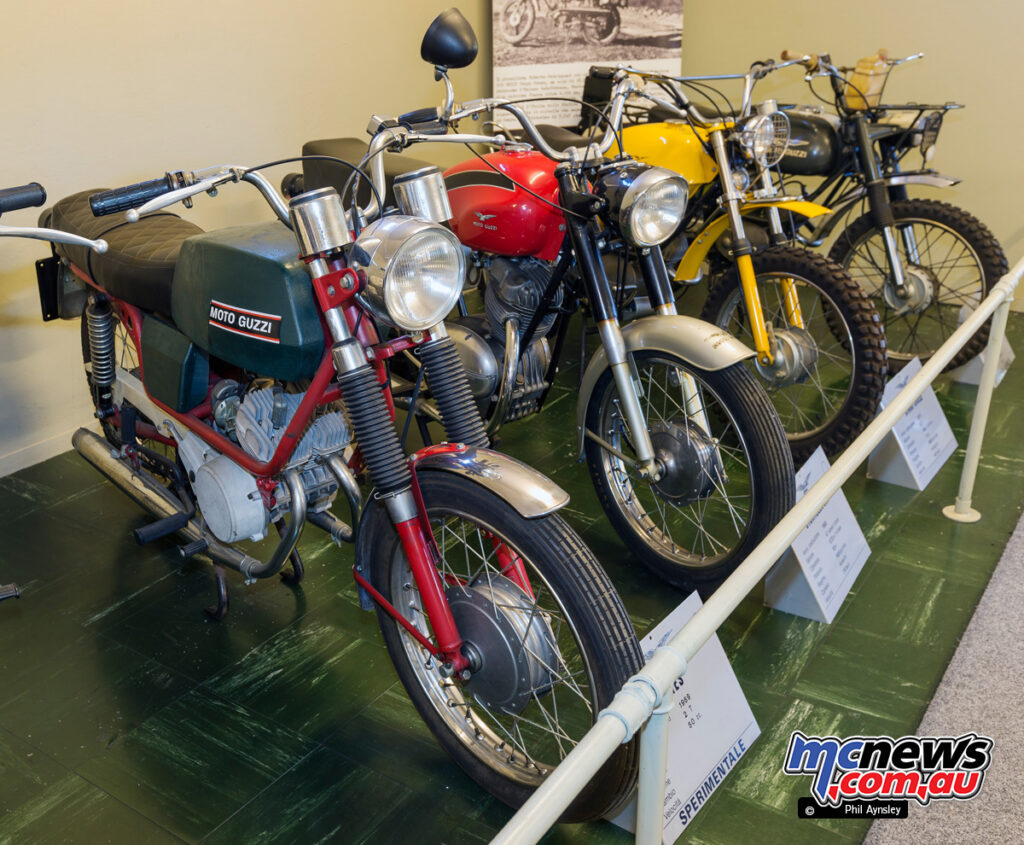
The prototype twin cylinder 125 BiDingo two-stroke was shown in 1971 but was not developed. It was based on the twin cylinder 50 cc prototype (the Ghez) that was displayed at the Milan Show in 1969.
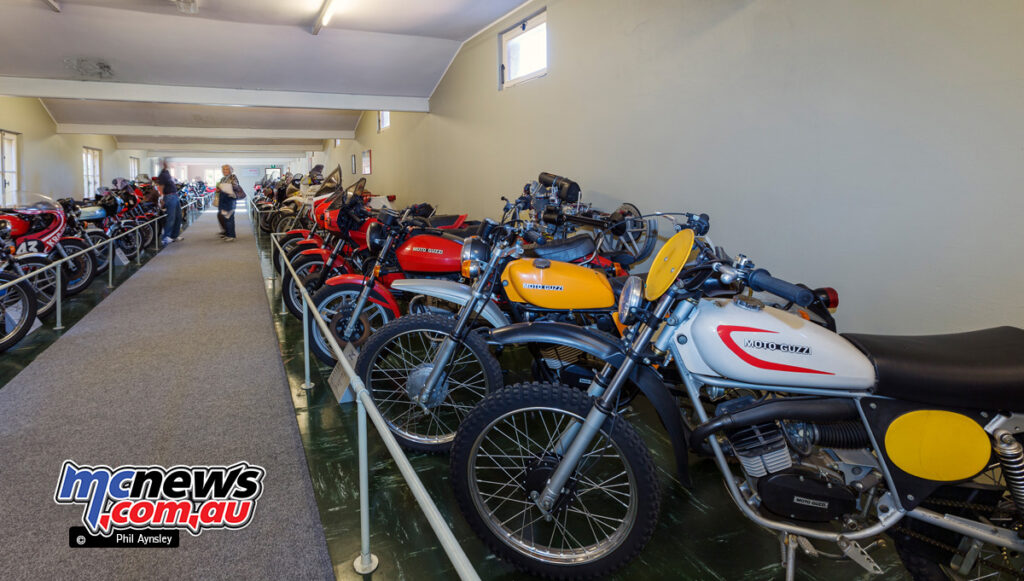
Two Cross 50 cc two-strokes. The silver bike is a 1977 model. Both were of Benelli origin.
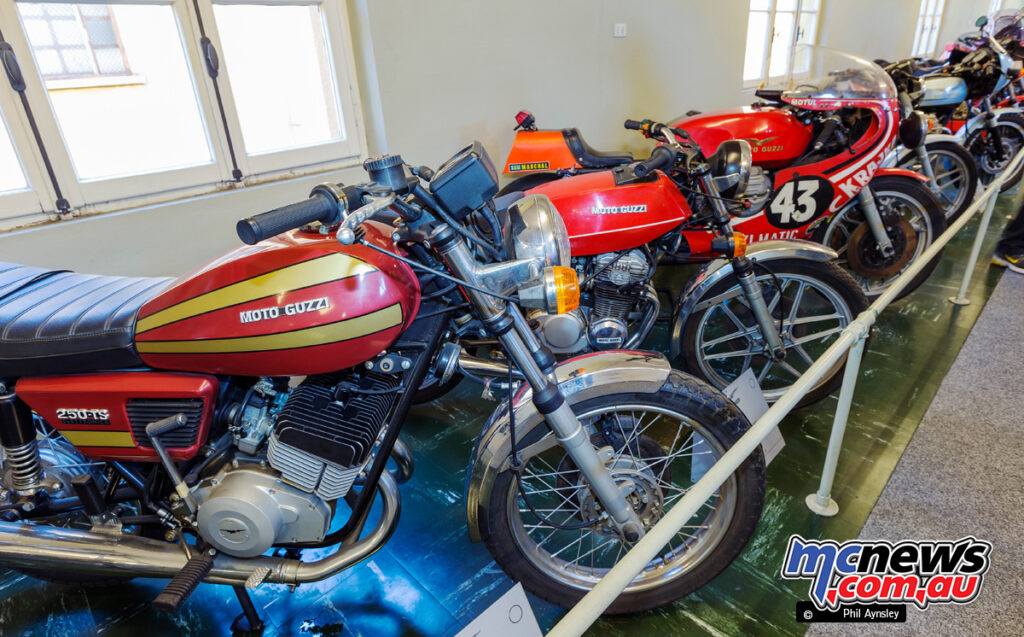
The first of the Benelli motorcycles to be sold as badge engineered Guzzis (a De Tomaso directive) was the 250TS, which was produced from 1973 to 1983. This Benelli 2C clone differed only in minor details such as the chrome cylinder bores and slightly larger carburettors. This a post 1975 model as evidenced by the Brembo disc brake (earlier models used a drum brake) and electronic ignition.
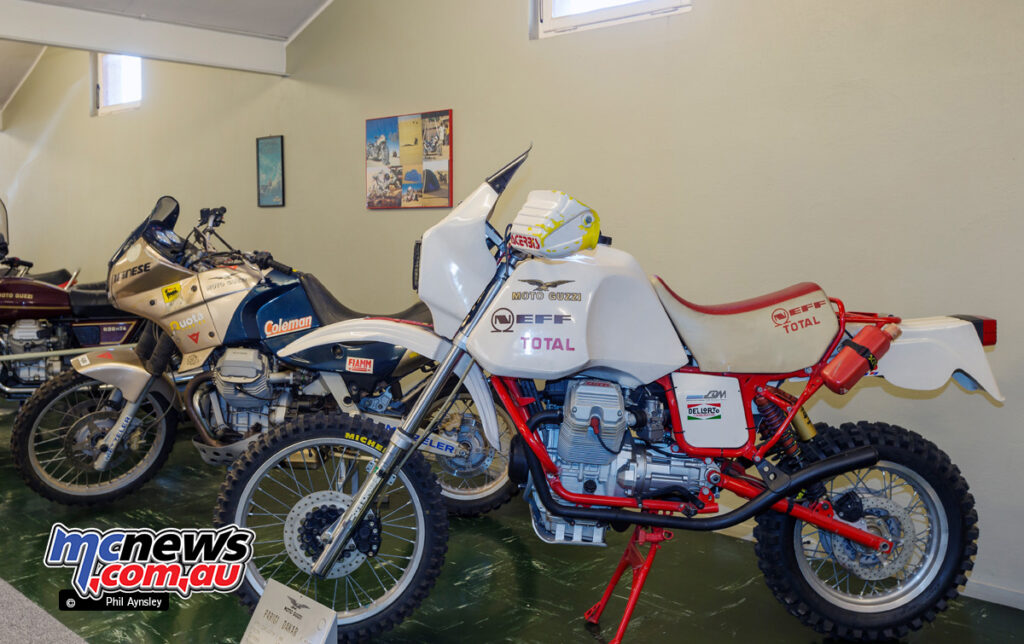
The 1986 750 cc Paris-Dakar works bike (no.1 of two). These used modified four-valve V75 motors in a chassis based on the earlier 650 cc Baja racers.
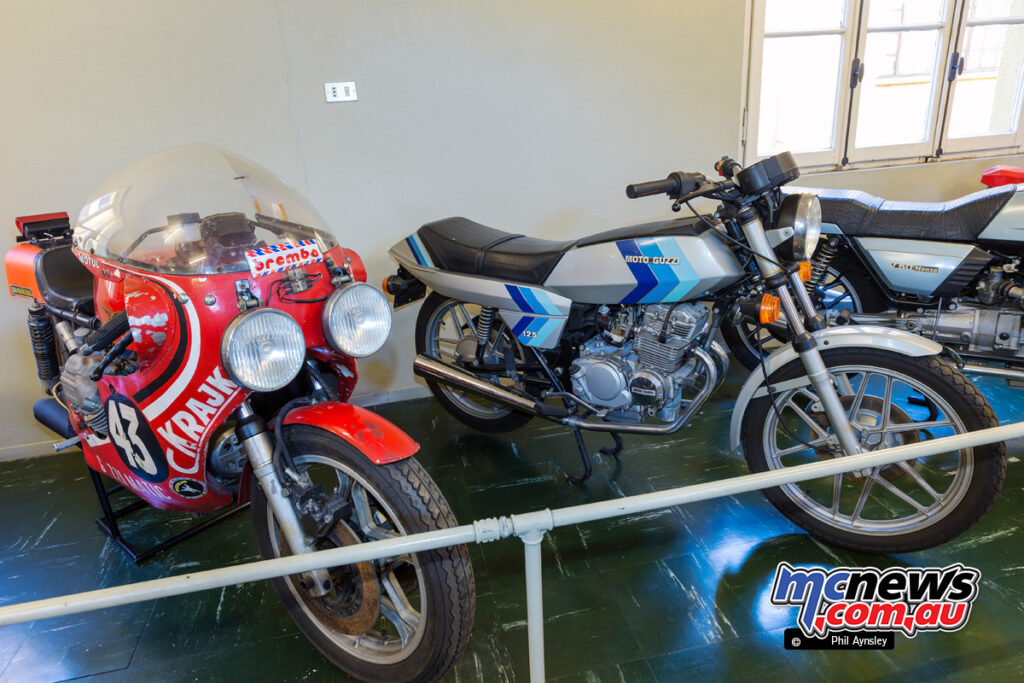
A 1979 125 2C 4T. This 125cc parallel-twin used half of the 254 four cylinder’s engine, in the same frame and with the same running gear, and produced 16 hp at 10,600 rpm. Weight was 110 kg, while top speed reached 130 km/h.
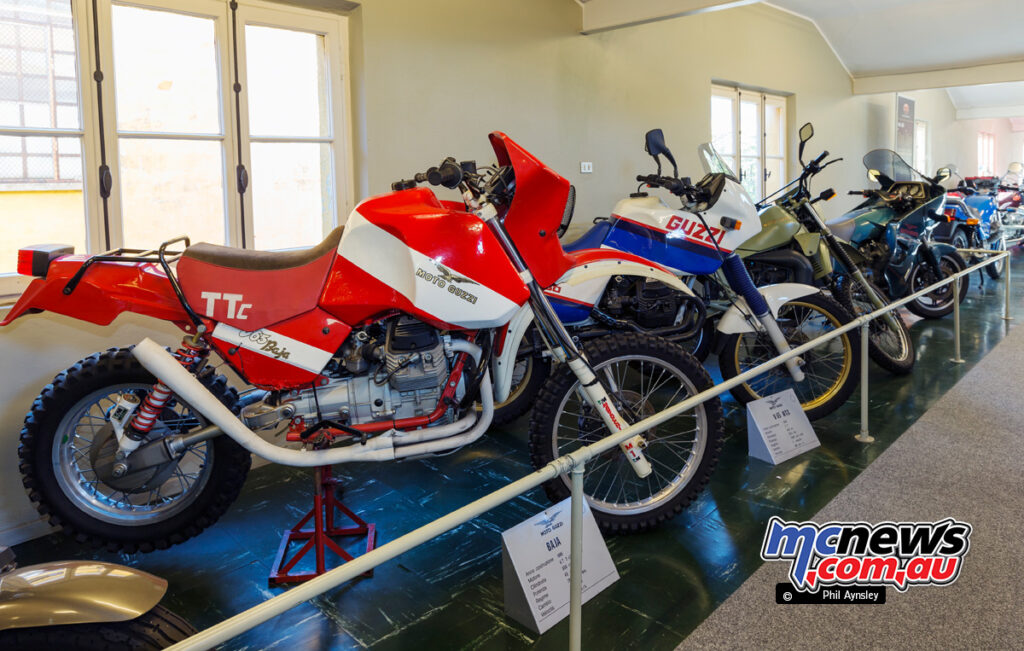
The final 650 cc Baja TTC (of 17 constructed over a two year period beginning in 1984). They were based on the V65 TT and competed in many rallies in Europe and Africa.
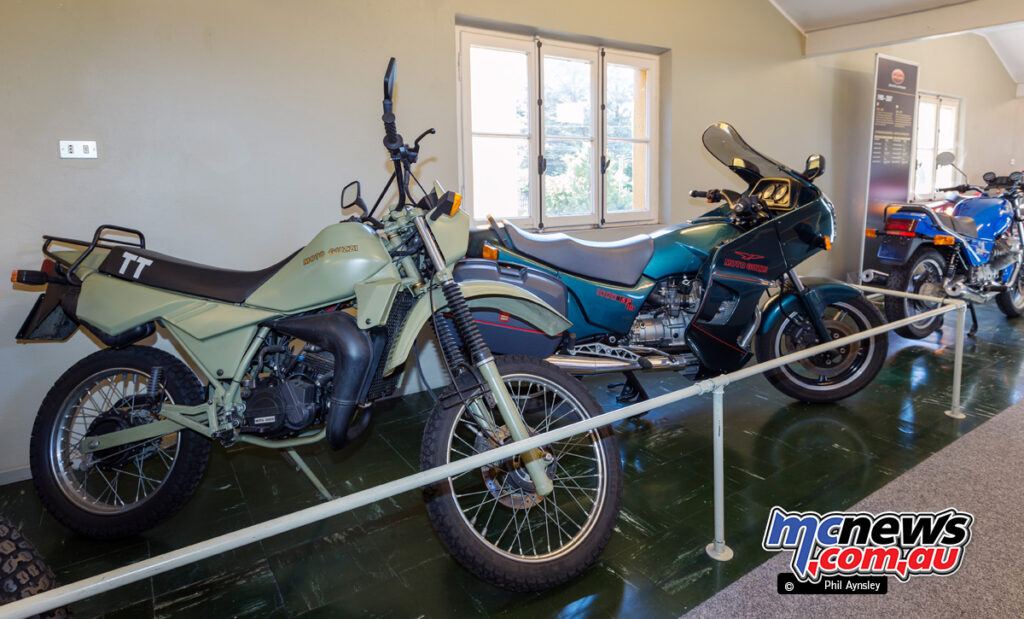
The final Benelli-based Guzzi was the 125TT that was first shown in 1983 but only produced from 1985 to 1988. It featured a mono-shock rear suspension, 35 mm Marzocchi forks, automatic oil injection, reed-valves and a six-speed gearbox.
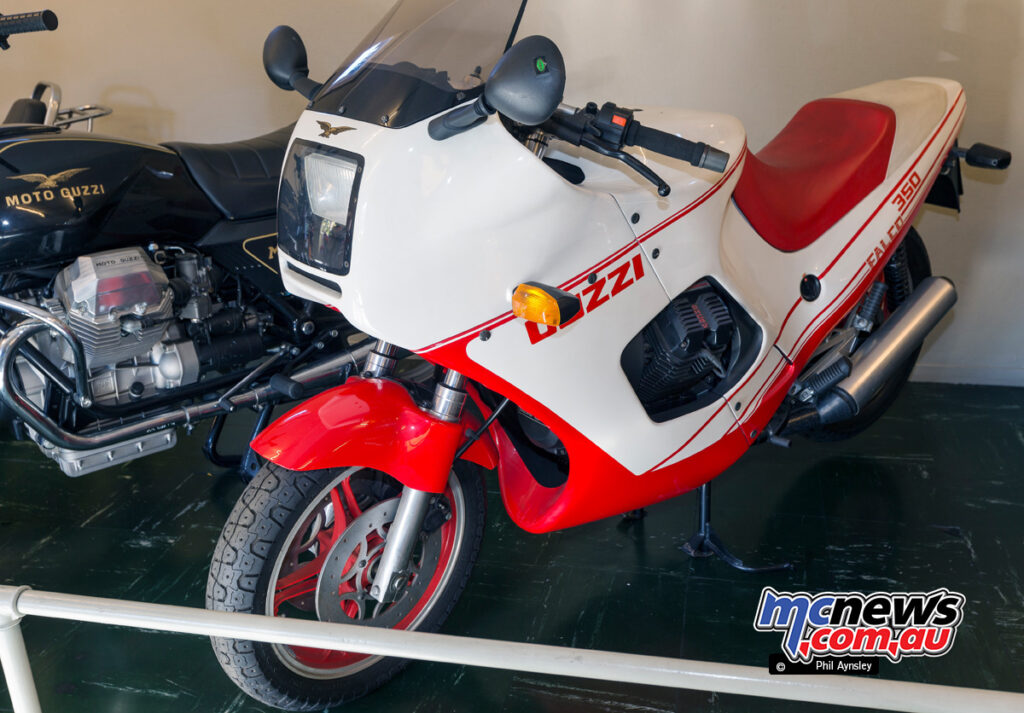
The 1987 V35 Falco prototype ran a 350 cc motor using DOHC four-valve heads and produced 40 hp at 8800 rpm. The project did not make production, but weighed 179 and boasted a top speed of 175 km/h.
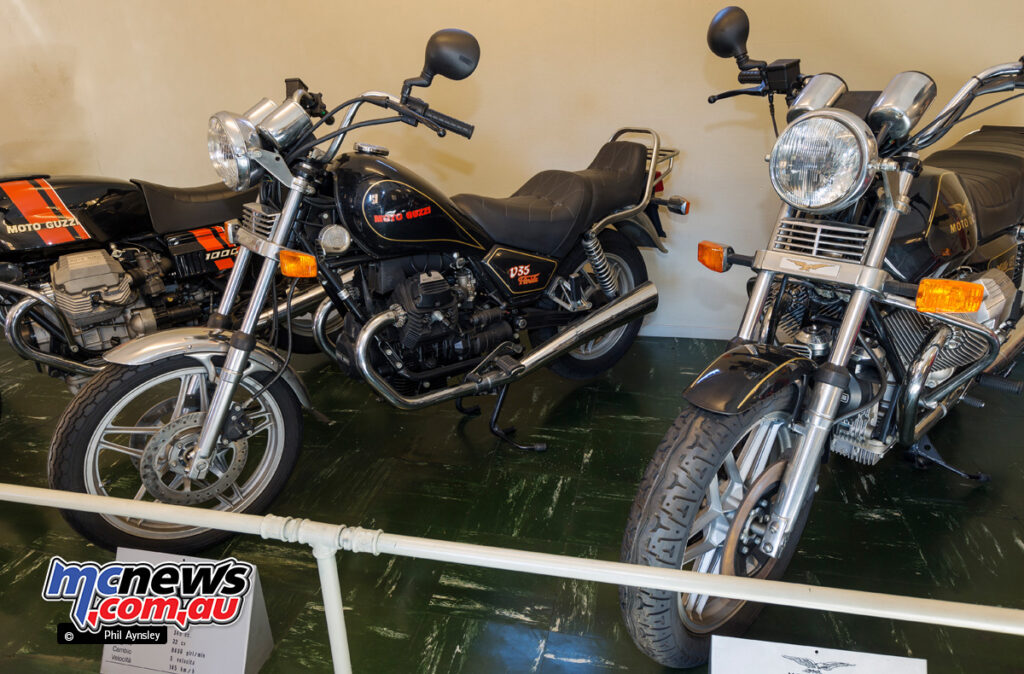
The V35 Florida was loosely based on the earlier Custom and was introduced in 1986 (along with a V65 version). Changes included longer and larger diameter front forks, different rear shocks and new instruments. The 350 cc motor had revised bore/stroke measurements so the heads from the V50 could be used and power was 39 hp at 8400 rpm. The bike weighed 170 kg and had a top speed of 148 km/h.
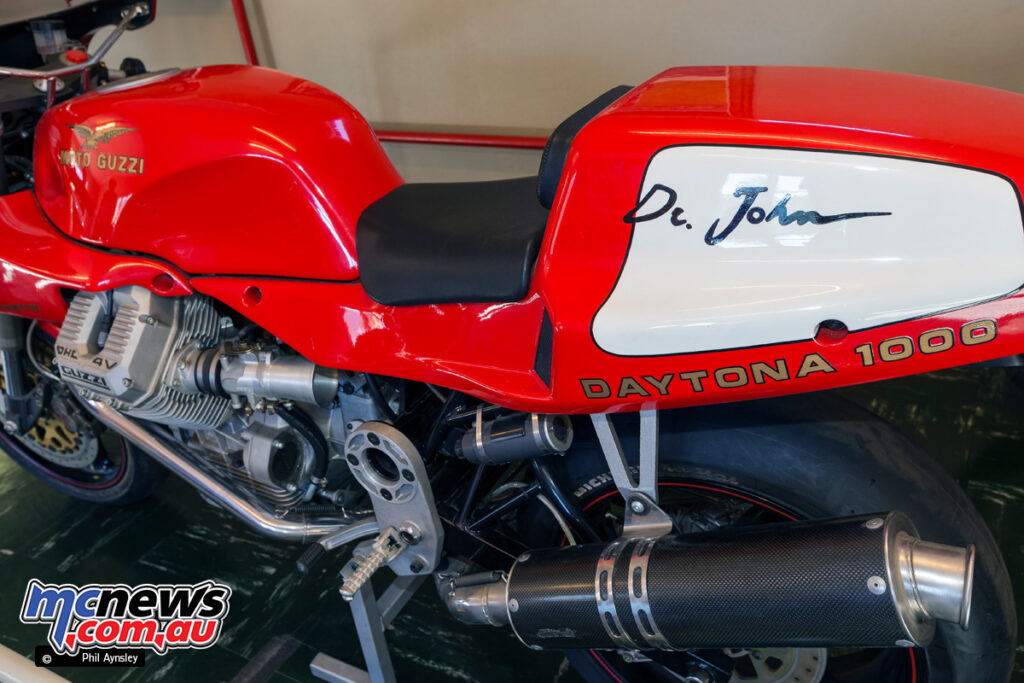
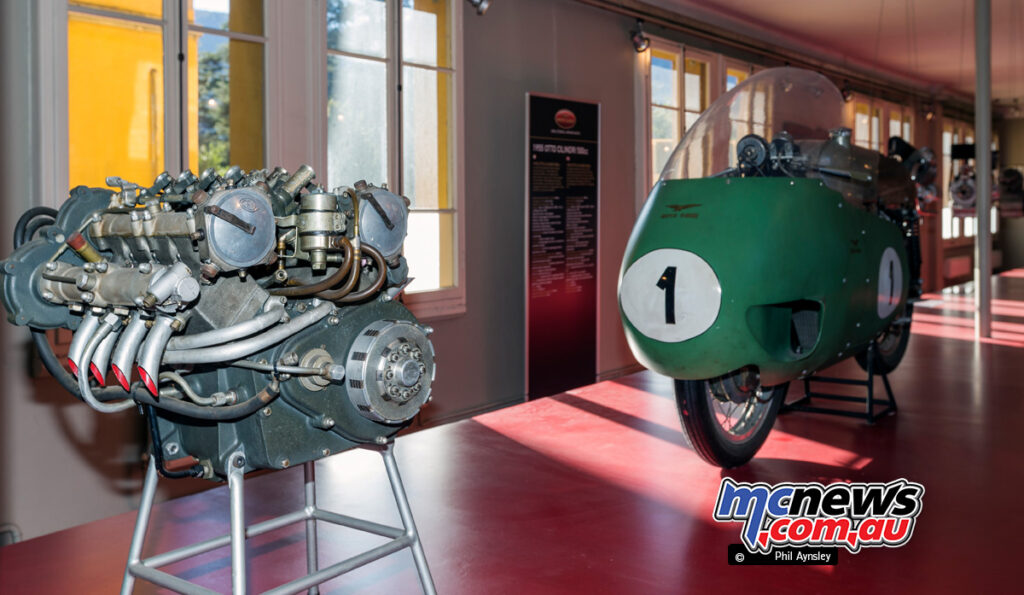
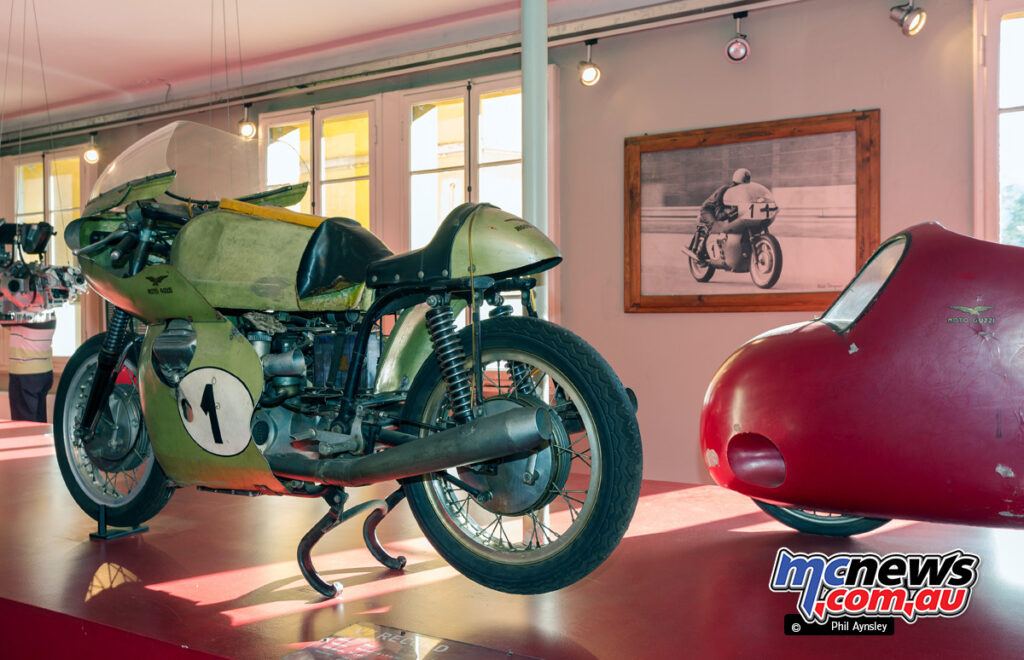
This 742 cc bike was used at Monza in June 1969 to brake three world records (the one hour, 100 km and 1000 km) in the 750 cc class (a second bike of 757 cc was used for the 1000 cc records).
Both bikes set further records in October with this 742 cc machine raising the 12 hour average speed to 179.55 km/h. Both bikes made around 68 hp at 6500 rpm and were significantly lightened to 158 kg. A 29 litre fuel tank was fitted. Top speed was 230 km/h.
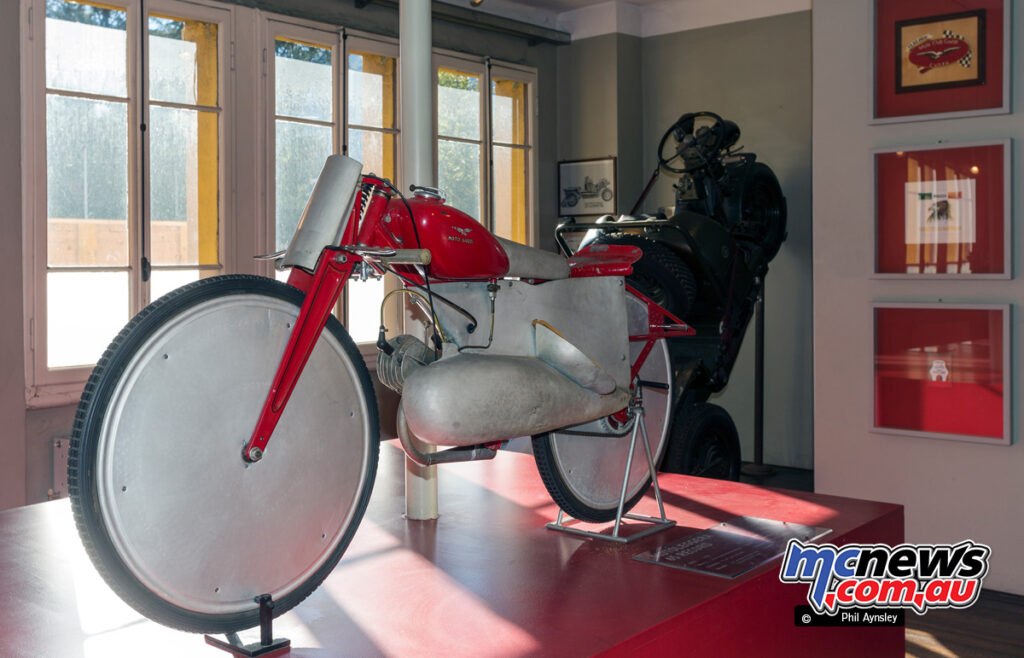
This 65 cc Guzzino based bike set 24 World Records at the Montlhery Circuit in France in September 1950.
Source: MCNews.com.au

















